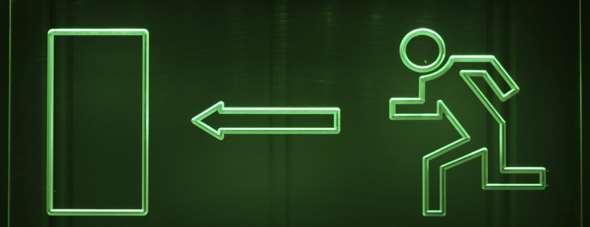Your Cart is Empty

If you’ve ever looked into buying an electronic lock for your door, you’ve probably heard the terms “fail safe” and “fail secure” before, but what exactly do they mean? What’s the difference between the two? Below is a brief explanation of what fail safe and fail secure locks are all about, as well as some points to consider regarding which one will be a good fit for your particular security needs.
All electric strike and maglock locking devices use power to secure a door, but what the lock does once the power goes out–hence the term “fail”–is what determines whether the lock is fail safe or fail secure.
The terms “safe” and “secure” refer to the status of the door on its secure side (a.k.a. the outside or key side). Most electronic door locks, whether fail safe or fail secure, still allow you to exit the building in the event of a power failure. In other words, you won’t be locked in if the lock stops working. This helps to clear up the somewhat confusing use of the word “safe” in “fail safe.”
You may not feel all that safe if your door is unlocked during a power failure, but when you think about it in terms of being able to exit the building with no problem, then it all makes sense. The door lock will “fail safe,” enabling you to have free egress without a hitch. Most fail secure locks use a technology known as electric latch retraction (EL), which basically means that power is required to retract the latch and unlock the door. The latch stays in a retracted position as long as power is applied, but as soon as power is cut off, the latch projects out again, locking the door.
The type of lock you choose will mainly be determined by the purpose that the lock will serve. For example, fail safe locks are often used in various life safety situations such as fire exit doors, or stairwell doors in high rise buildings, because they can provide easy ingress and egress in case of an emergency situation where power has been cut off. The drawback to this is that once the power is out, you’ll have to find a way to ensure that all entry points are secured. Generally speaking, fail secure locks are the most commonly used electronic locking device for high security situations, because their default state is to remain locked.
Power consumption is another issue to consider. Since fail safe locks basically require a constant application of power to keep the doors locked, they can be more expensive to operate than fail secure locks, which keep the doors secure even when no power is applied.
When you think about it, there’s really no such thing as one lock being “better” than the other; it’s just a matter of which one will best serve the needs of your particular situation. Just keep the above points in mind, so that you can make a more informed decision about which lock will be the most appropriate choice for your security needs.
© 2025 GoKeyless. All rights reserved. Privacy Policy. Terms of Use. Powered by Brandography.